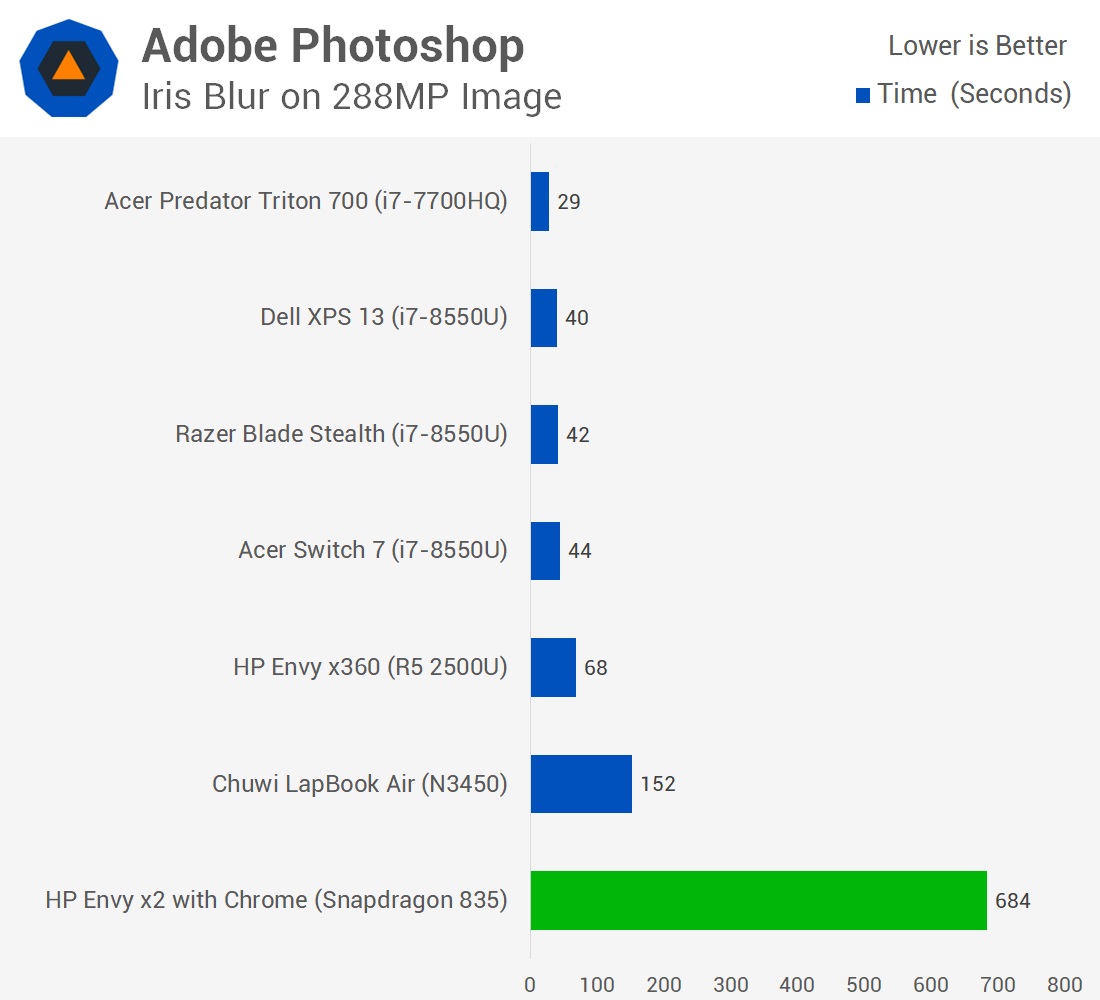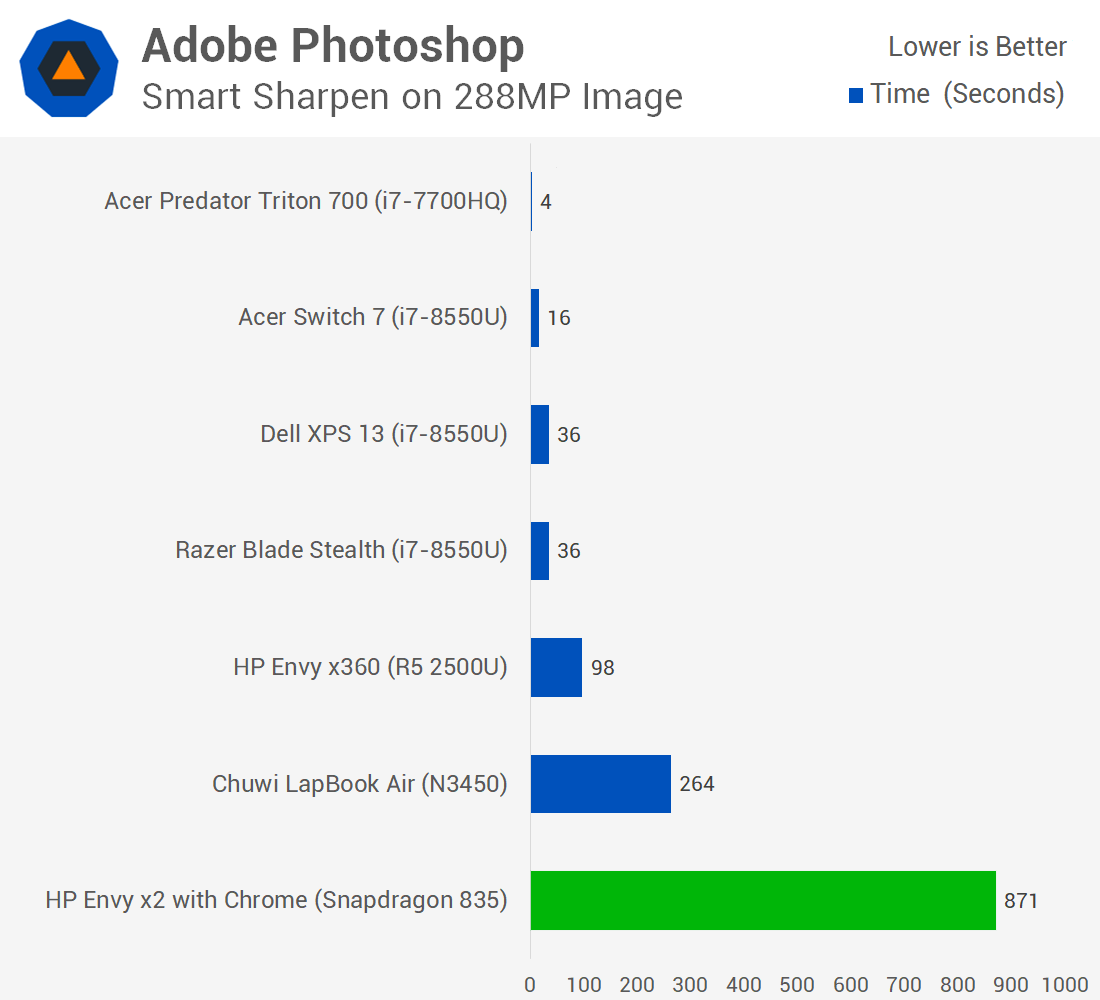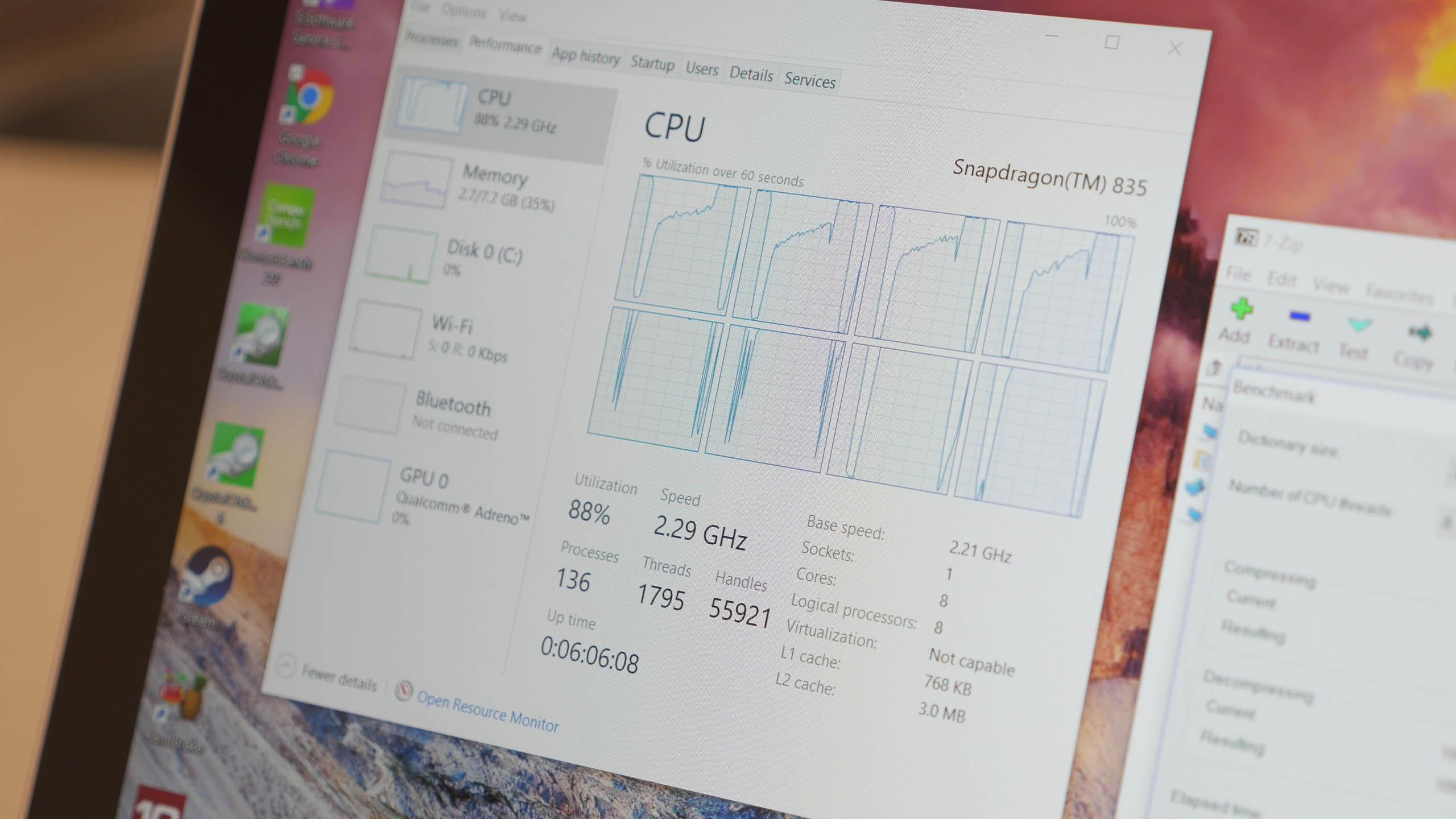x86 Emulation Performance
Let's talk performance now, because it doesn't get better when looking at how fast x86 emulation is. The Envy x2 uses a Snapdragon 835 SoC, which is 2017's flagship smartphone chip packing eight cores, split into two clusters.
There's four Kryo 280 cores clocked at 2.45 GHz, along with four Kryo 280 efficiency cores clocked at 1.9 GHz. There's also an Adreno 540 GPU clocked at 710 MHz. Both the CPU and GPU are designed in-house at Qualcomm, and the SoC is fabricated at 10nm.
My Envy x2 review unit has 8GB of RAM, although many units include just 4GB. There's also a 256GB SSD inside.

Starting off with PCMark 8's Home test, and immediately it's not good news for Windows on ARM's emulated performance. One of the cheapest and slowest Intel chips you can get in a mobile form factor, the Goldmont-based Celeron N3450, is 51 percent faster here. 51 percent! The Core i5-5200U from three years ago is 182 percent faster, while the i7-7Y75, Intel's current low-power Core offering, is 160 percent faster. Wow.

It doesn't get better in Cinebench R11.5, and yes, we had to go back to R11.5 testing as there's a 32-bit version of this benchmark. The Snapdragon 835 is more competitive against the N3450, but the N3450 still pulls ahead by 6 percent. The 7Y75 more than doubles its multi-core performance, and just forget about comparing it to something like the i7-7500U or i7-8550U, it just gets obliterated.
On a more concerning note, single-core performance is extremely weak from the Snapdragon 835 while running emulated workloads. The N3450 doubles its single-thread performance, while the i7-7Y75 is more than five times faster. Yep, five times faster. Absolutely dire results for Windows on ARM emulation so far.


In fact doing any sort of rendering is very slow on the Snapdragon 835. The N3450 slaughters Windows on ARM emulation in x264 and x265 rendering, and again the N3450 is one of the slowest Intel chips you can get.


Moving on to Photoshop and... wow. I thought Windows on ARM emulated performance would be weak, but this is something else. The large 288 MP test photo we use absolutely chokes the Snapdragon 835. This is something I noticed while trying to work with several other large files and datasets. The Snapdragon 835 is simply not built for these tasks, especially while emulated.


There are some benchmarks where Windows on ARM performance isn't as embarrassing. Compression and decompression is solid provided there's multi-threading, with the Snapdragon 835 beating the N3450 handily in WinRAR, and in 7-Zip decompression. Intel's other CPUs are much faster but hey, at least Windows on ARM gets a small win here.

It's similar in the Excel Monte Carlo workload, where the Snapdragon 835 is 62 percent faster than the N3450, but only marginally slower than the i5-5200U. The i7-7Y75 is 47 percent faster in this test, though.


Any GPU-related workloads, including games, tend to be the least reliable on Windows on ARM. However some 3DMark tests do work, and the results aren't too bad for the Snapdragon 835. In the more CPU-limited Cloud Gate test, the 835 beats the N3450, though it does get trounced by the i7-7Y75. The margin between the 835 and N3450 gets larger in Sky Diver as the GPU becomes the bottleneck, though again the 7Y75 is significantly faster.
